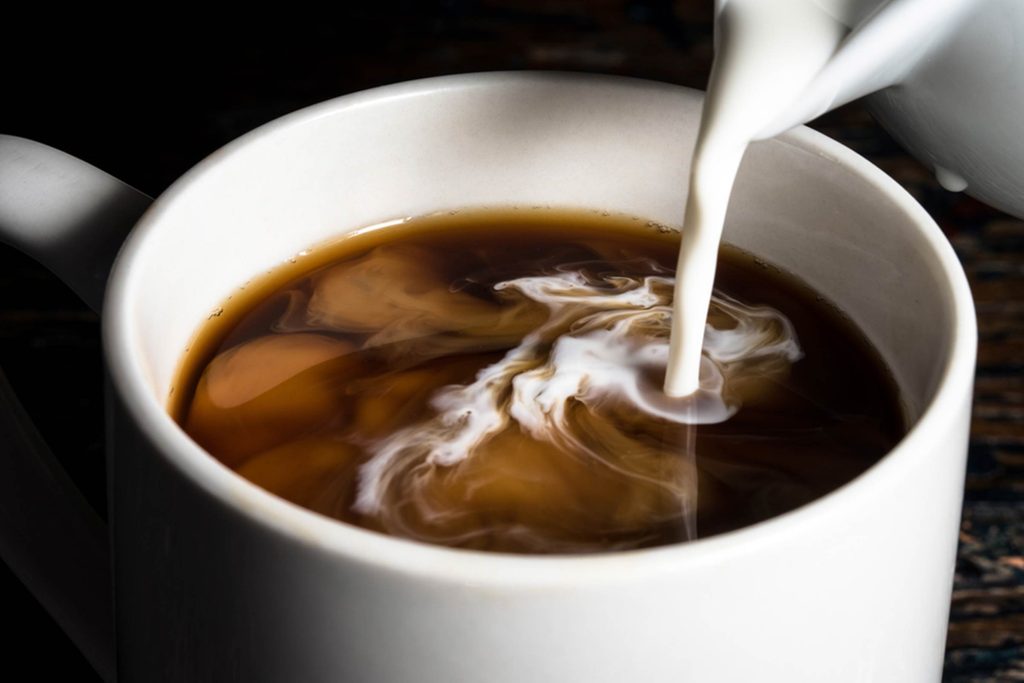Is Using Titanium Dioxide in Food Safe?
Updated: Jun. 08, 2020
White foods—from coffee creamer to salad dressing—can use titanium dioxide for coloring. Is it actually safe to eat?
If you’ve had coffee creamer, chewing gum, or a vanilla cupcake recently, there’s a good chance it contained titanium dioxide.
You might have heard about titanium dioxide because it’s also used in sunscreens, paints, and plastics. The chemical can make whites brighter in foods like ranch dressing, plus change the texture of some products, like chocolate and doughnuts.
Some people get nervous because the titanium dioxide in paints gives it a bad rap. The CDC’s National Institute for Occupational Safety and Health does say ultrafine titanium dioxide is a potential occupational carcinogen for humans. But breathing in titanium dioxide when you’re painting is completely different from when you eat it—and much less of a concern, says Lauri Wright, PhD, RDN, LD, assistant professor in public health at the University of North Florida and spokesperson for the Academy of Nutrition and Dietetics.

“It really is comparing apples to oranges,” says Dr. Wright. “It’s different forms and very different amounts. The food titanium dioxide is very different than what they put into paint and other chemicals.” In fact, the titanium dioxide mostly got its cancer-causing reputation because it’s in the form of tiny particles that can be inhaled into the lungs—not because of a response to the chemical itself, says Hans Plugge, senior toxicologist with 3E Company and American Chemical Society expert. “It irritates the lung lining,” he says. “Eventually it causes enough injury that it causes a cancer-like response.”
Still, some consumers don’t like the sound of it, which is why there’s been a movement to get the additive out of the ingredient lists. In 2015, Dunkin Donuts took titanium dioxide out of its powdered doughnut recipe and So Delicious removed it from its coconut milk creamers. One concern from other brands is that without the coloring keeping creamer bright white, people might get grossed out or confused. For instance, a creamer that’s a muddier color could lead coffee drinkers to pour more than they want into their drinks.
When it comes to your diet, you can rest easy, according to the Food and Drug Administration. The group’s statement—updated in April 2019—concludes that titanium dioxide is generally recognized as safe and is fine in food, as long as it doesn’t make up more than one percent of the product’s weight.
However, in 2010 the World Health Organization’s International Agency for Research on Cancer deemed it a possible carcinogen for humans. Before you start worrying about getting cancer from your cupcakes, though, Plugge says the IARC doesn’t differentiate between potential carcinogens for humans versus animals. “They tend to make blanket statements based on animals,” he says. “There are a lot of chemicals that don’t do anything in rats but do something in humans, and vice versa.”
An example of animal studies raising concern are these findings published in 2017 in the journal Scientific Reports: When rats ingested titanium dioxide daily, their immune systems flared up and they developed pre-cancerous lesions. (Watch out for these 10 potentially cancer-causing foods.)
If titanium dioxide produces that same inflammatory response in humans, there’s a good reason to avoid eating it, says Wright. “From a nutritional standpoint, we’re really investigating what things in our diet can contribute to inflammation and what can decrease inflammation,” she says. After all, inflammation has been linked with diseases, from heart conditions to type 2 diabetes. But just because lab rats get inflammation from a chemical doesn’t mean humans will—especially in the small amounts allowed in our foods.
Even though any food you eat is less than one percent titanium dioxide, Wright says it could still be possible to get excess amounts. The additive used to be mostly for gum and toothpaste, but now it’s branched out to coffee creamers and pastries. “Getting excess amounts is where you run the risk of getting too much of these things generally recognized as safe,” she says. Learn the signs that you’re eating too many additives.
But Wright has a bigger reason to avoid titanium dioxide: Most foods with the additive are sweets. “Candies, cakes, and doughnuts—have only occasionally in the diet because of other issues like trans fats and sugars,” she says. “It’s another reason to stay away from some of these foods … and emphasize the foods we know can take down inflammation.” Start with these foods that fight inflammation.















